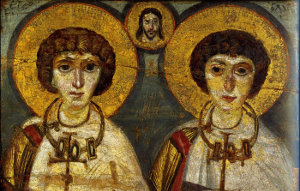(Written for the Love Your Neighbor Coalition Newsletter at the 2016 General Conference of The United Methodist Church)

I was serving my first parish out of seminary in a small, farming and brickmaking community. When one of the members of the church I served heard I was interested in sexuality education for high school age kids, his quick comment was, “Just bring them out to my farm. I'll teach them all they need to know.”
Reproduction is only one aspect of sexuality, however. Every culture shapes human behavior—including gender expression. Religious practices and traditions are associated with gender and reproduction while ecstasy and union not only become metaphors for relationship with God, but in some religions, with each other as well. Jesus, in fact, often talked about the bridegroom having union with the bride as a metaphor for God and God’s people.
I once shared my favorite definition of sexuality with a woman who is a very insightful and spiritual Catholic. I said, “sexuality is a sign, a symbol, and a means of our call to communication and communion.” She responded, “that's the way I think of spirituality!”
I adopted this thinking from theological ethical thinker, James B. Nelson after reading Embodiment: An Approach to Sexuality and Christian Theology. Many writers in the field of spirituality point out that we are meant for community and communion with the Divine and with each other.
Sexuality includes biology, to be sure, but bodies do not necessarily correspond neatly to male or female categories. Some cultures have categories for more than two genders. In most cultures, women and men dress and act distinctly, either accenting or understating the underlying body differences. This is gender role behavior, commonly called “masculinity” or “femininity,” and most people fall on a spectrum of masculine and feminine expression.
Human beings generally have a sense of which “sex” or “gender” they are, and it usually matches their bodies—but not always. Finally, most, but not all, people experience sexual and emotional attraction to others, and want to connect with them in one or more ways, sometimes including physical intimacy. This is called “sexual orientation.”
All of this is “sexuality.” And sexuality education is all about thinking about and understanding these things and the values which human beings and societies attach to them. Theology, the study of “God” and things “spiritual,” has treated sexuality as something to be suppressed or even deemed evil in comparison to the things of the spirit. But does it have to be so? Is sexuality so removed from spirituality?
If you think about it, though, maybe it's not a bad definition: it describes how sexuality impacts our daily lives in many ways. So, maybe spirituality and sexuality are not all that separate.
Trying it on:
“Sexuality is a sign, a symbol, and a means of our call to communication and communion.” We find union, ecstasy, and love with another human being—which inspires us to care for our loved one, our family and our community.
“Spirituality is a sign, a symbol, and a means of our call to communication and communion.” We find union, ecstasy, and love with God—which inspires us to serve others.
Ben Roe is a former pastor, pastoral counselor and sexuality educator. In retirement, he devotes his time to advocacy with Affirmation, RMN, and the Western Methodist Justice Movement.
